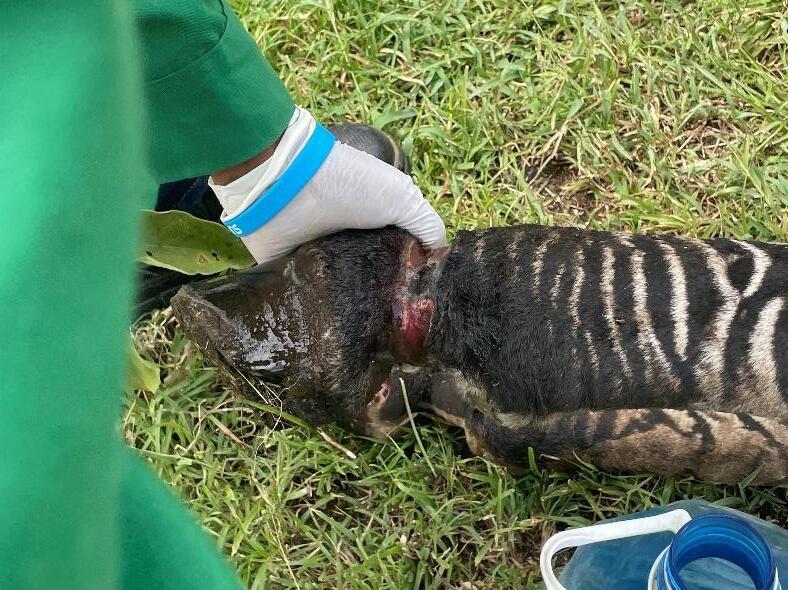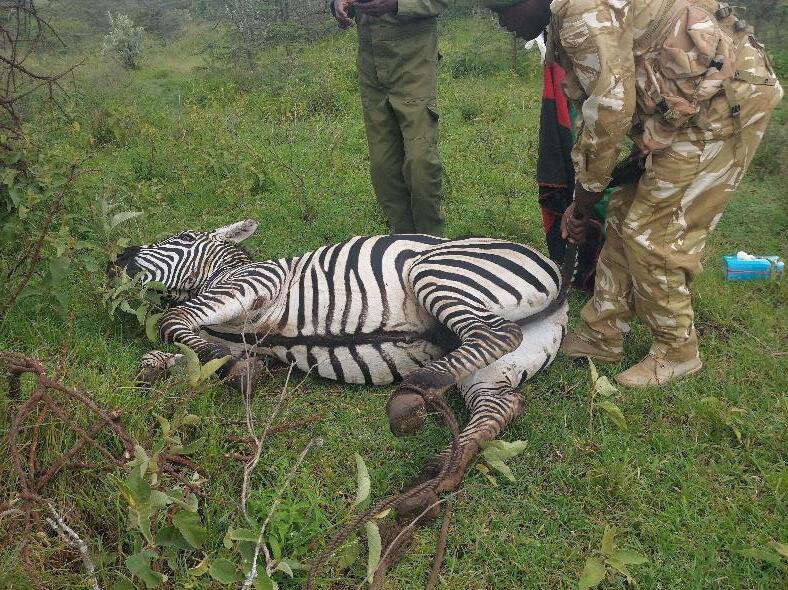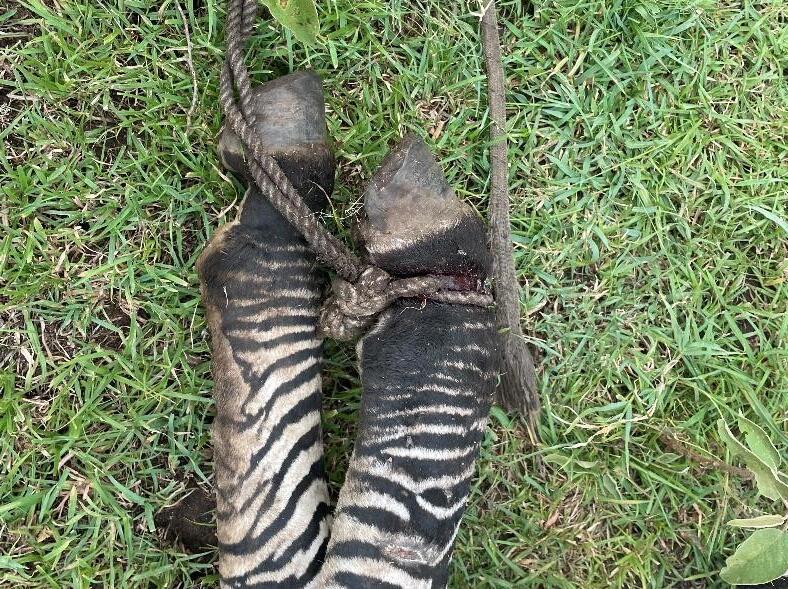SWT/KWS RIFT VALLEY MOBILE VETERINARY UNIT


DECEMBER 2022

Introduction
9 Cases in December 6 Poaching Cases
 December Report by Dr. Titus Kaitho
December Report by Dr. Titus Kaitho

89% success Rate
In December 2022, the Rift Valley Mobile Veterinary Unit attended 9 cases, 6 of these cases were related to poaching, and 8 cases in total out of 9 were attended to successfully translating to 89% success rate. Sadly, a female zebra which had its hindlimb partially amputated by a snare had to be put to rest to alleviate further pain and suffering given its poor prognosis.
Acknowledgement
We sincerely thank Sheldrick Wildlife Trust (SWT) and FIGS for their support and sponsorship. We also acknowledge Angela Sheldrick, CEO -SWT, for her unwavering support and interest in the work undertaken by the Vet Unit. Additionally, we appreciate Kenya Wildlife Service (KWS) for proving equipment, coordination, and managerial oversight. We also acknowledge the Wildlife Research & Training Institute (WRTI) for hosting the Rift Valley Mobile Vet Unit. We sincerely thank all stakeholders and scouts who reported wildlife in distress. Thank you all.

Case Details


Giraffe Relocation Soysambu Conservancy
5 giraffes (4 females & 1 male) were translocated from Soysambu Conservancy to Tindress Wildlife Conservancy to improve the genetic diversity in the existing population in the conservancy. The Veterinary & Capture team fabricated the holding boma and offloading ramp on 12th December 2022 before selecting ideal candidates for capture (sub-adult giraffes 2 to 3years old) from different herds
Immobilisation and capture
Individual giraffes were darted with 11 mg Etorphine and 100 mg Azaperone. They were roped down once the drugs had taken effect about 8 minutes post-darting. General anaesthesia was immediately reversed thereafter with 225 mg Naltrexone for full reversal. The giraffes were then quickly blind folded, and their ears plugged. They were guided with ropes into a loading crate and towed with a farm tractor to the holding boma. They were then released into the boma and acclimatized by hand feeding with natural browse and watering for about 2 weeks. The giraffes were also slowly introduced to lucerne cubes in the holding boma

Translocation and Release
On 23rd December 2022 all 5 giraffes were translocated in two groups from Soysambu Conservancy to Tindress Wildlife Sanctuary, approx. 50 Km, by a canter lorry All giraffes were safely released in the sanctuary.




Eland Relocation Soysambu Conservancy
The team also captured and translocated 10 common elands (2 males and 8 females) from Soysambu Conservancy to Tindress Wildlife Conservancy. One eland that was found to be pregnant was reversed from anaesthesia and released immediately.



Immobilisation and capture
The elands were darted using the chase and dart method as they were very jittery when approached by vehicles and people. Each adult eland was darted with 15 mg Etorphine and 100 mg Azaperone while subadults were darted with 10-12 mg Etorphine and 100 mg Azaperone. The average induction time was 9 to 10 minutes. When fully immobilized the animals were blind folded and doused with cold water to avoid hyperthermia and shock and secured before they were hoisted into a truck with a lifting crane. Elands than ran considerable distances were injected with steroids and antibiotics to counteract capture myopathy. Once they were loaded into transport truck, general anaesthesia was reversed with 225 mg Naltrexone given IV route and IM route. Recovery from anaesthesia was smooth and with no complications.
Translocation and release
At the end of each day, the captured elands were translocated to Tindress Wildlife Sanctuary. All the 10 elands were safely released, and they are all doing well.

Zebra Snared
This case was reported by the KWS investigations team


Immobilisation, examination and treatment
Lower KALRO
The zebra was darted with 5 mg Etorphine and 100 mg Azaperone. The adult female zebra had a wire snare around the neck. Luckily, the zebra had suffered no injury. The snare was removed then anaesthesia was reversed with 75 mg Naltrexone given by IV & IM route.


Prognosis
The zebra has a good prognosis
Eland Snared Kenya Nut - Olmurogi



This adult male eland exhibited lameness on left hind leg.

Immobilisation, examination and treatment
The eland was darted with 15 mg Etorphine and 100 mg Azaperone. It had a maggot infested wound on the left hind leg caused by a wire snare which had self-released. The cause of lameness was this deep-seated injury on the hind leg. The wound was cleaned with water and rinsed with Iodine then a fly repellent was sprayed onto the wound. 18,000 mg Oxytetracycline and 1,000 mg Flunixin Meglumine were administered intramuscularly and 10 ml Ivermectin was injected subcutaneously. Anaesthesia was reversed with 225 mg Naltrexone given by IV & IM route to avoid re-narcotization.
Prognosis
The eland has a good prognosis.















